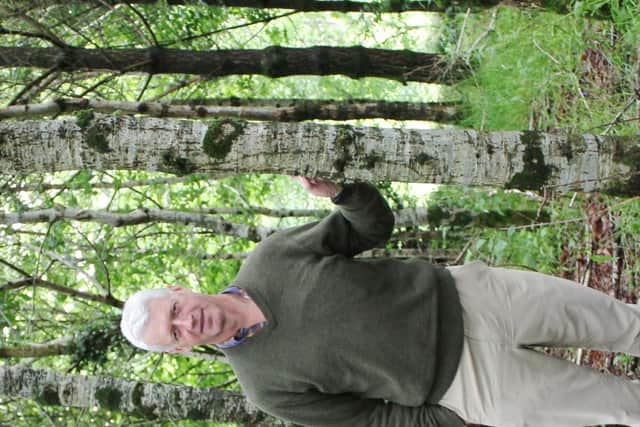Forestry sector looks to the future
and live on Freeview channel 276
The event provided industry stakeholders, including Forest Service, who were hosting the meeting, with an opportunity to look at future developments for the sector in the context of climate change, the evolution of farm support policies and the need to generate higher levels of biodiversity right across Northern Ireland.
Hetherington commented: “It has been agreed that a follow-up meeting should take place in about six months’ time.
Advertisement
Advertisement
“This is a welcome development in its own right. We are way beyond the stage of simply talking about what could be done: the time for action is now.”


He continued:“I was disappointed that organisations such as the Ulster Farmers’ Union, the Royal Society for the Protection of Birds and other relevant DAERA Departments were not present at this week’s meeting. In my opinion, their future in the process that has been kick started is initially important.”
Everybody agrees that the need to dramatically increase the level of woodland creation carried out in Northern Ireland is crucially important.
He said:“All the targets already in place confirm this reality. The 10-year Forest of the Future initiative, launched by former agriculture minister Edwin Poots in 2020, specified a new woodland creation target of 9,000ha of land, between 2020-2030.
Advertisement
Advertisement
“This works out an annual tree planting rate of 900ha: we are nowhere near this level of planting at the present time, averaging c.40-50% over the past few years.
“Meanwhile, the overarching woodland and forestry creation target, officially agreed for Northern Ireland, seeks to increase tree cover levels to 12% by 2050.
“The current figure stands at just 8.7%. This represents the lowest level of woodland cover found in many other parts of the UK and across most of Europe.”
Turn to page 16 for more
Hetherington is also deeply concerned with the impact that Forest Service’s current commitment to restore priority habitat - peat land areas within its own estate will greatly diminish the critical mass of Northern Ireland’s existing woodland base, only from the point of loosing very significant areas of woodland, perhaps up to 50% of the Forest Service total hectarage.
Advertisement
Advertisement
“The existing tree planting targets are challenging enough,” he stressed.
“However, if Forest Service commits to these re-wetting projects, then the average tree planting targets will have to increase commensurately, possibly by as much as 100% from now to 2050.
“This is why we need to see the setting of clear woodland development targets over the coming months and a clear commitment on the part of all stakeholder groups to ensure that these are met in full.”
But it’s not all bad news.
John Hetherington confirmed that the new Small Woodland Grant Scheme (SWGS) has the potential to work well here, adding: “But many of the projects agreed this year may not well happen. This is a direct result of the fact that the young trees required cannot be physically sourced.
Advertisement
Advertisement
“Nurseries in Great Britain and the Republic are flat out trying to keep up with the demand for young trees in their respective regions at the present time.
“Given these circumstances, the need for a bespoke tree nursery to be established in Northern Ireland is obvious.”
Looking to the future, the Premier Woodlands’ director specified two overarching priorities for Northern Ireland’s forestry sector.
The first centres on the need for the enhanced carbon sequestration potential of conifers, relative to broad leaves, to be fully recognised in Northern Ireland’s climate action plan.
Advertisement
Advertisement
He explained:“Research has confirmed that conifer plantations can sequester up to three times as much carbon annually than is the case with broad leaf woodlands of a similar size.
“Within the provisions of the Climate Action Plan, it has projected that future tree planting projects would be undertaken on the basis of an 80:20 broad leaf versus conifer ratio.
“Given what science we now know, it is imperative that the plan references a significantly higher conifer planting ratio.
“Such an approach will also help to maintain jobs with the forestry and sawmilling sector as a whole, and help displace imports”
Advertisement
Advertisement
John Hetherington concluded:“It is also imperative that Forest Service reviews its peat land restoration strategies by taking account of recent carbon research reports. If the current plans are implemented, Northern Ireland’s entire forestry sector will be holed below the water line.”